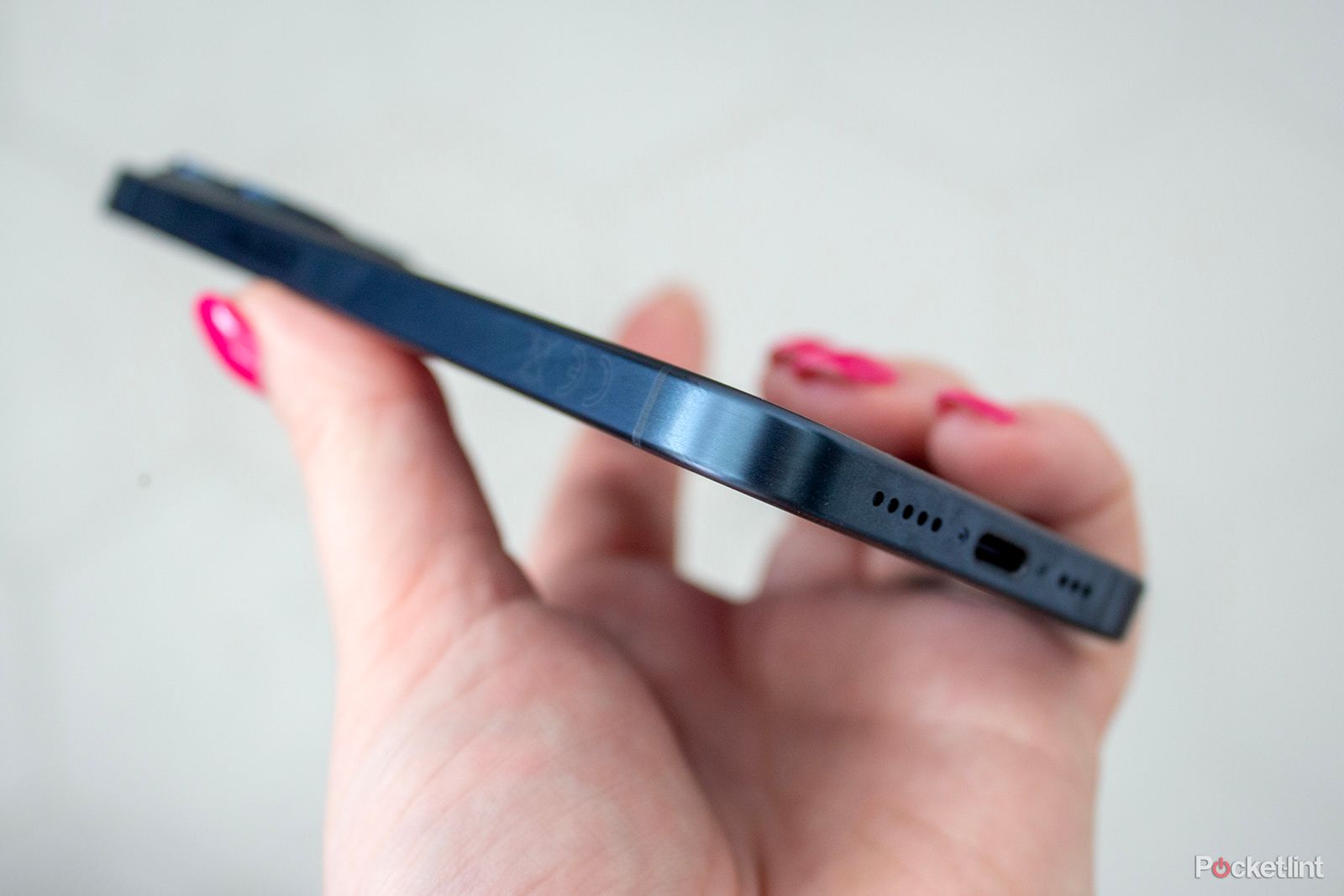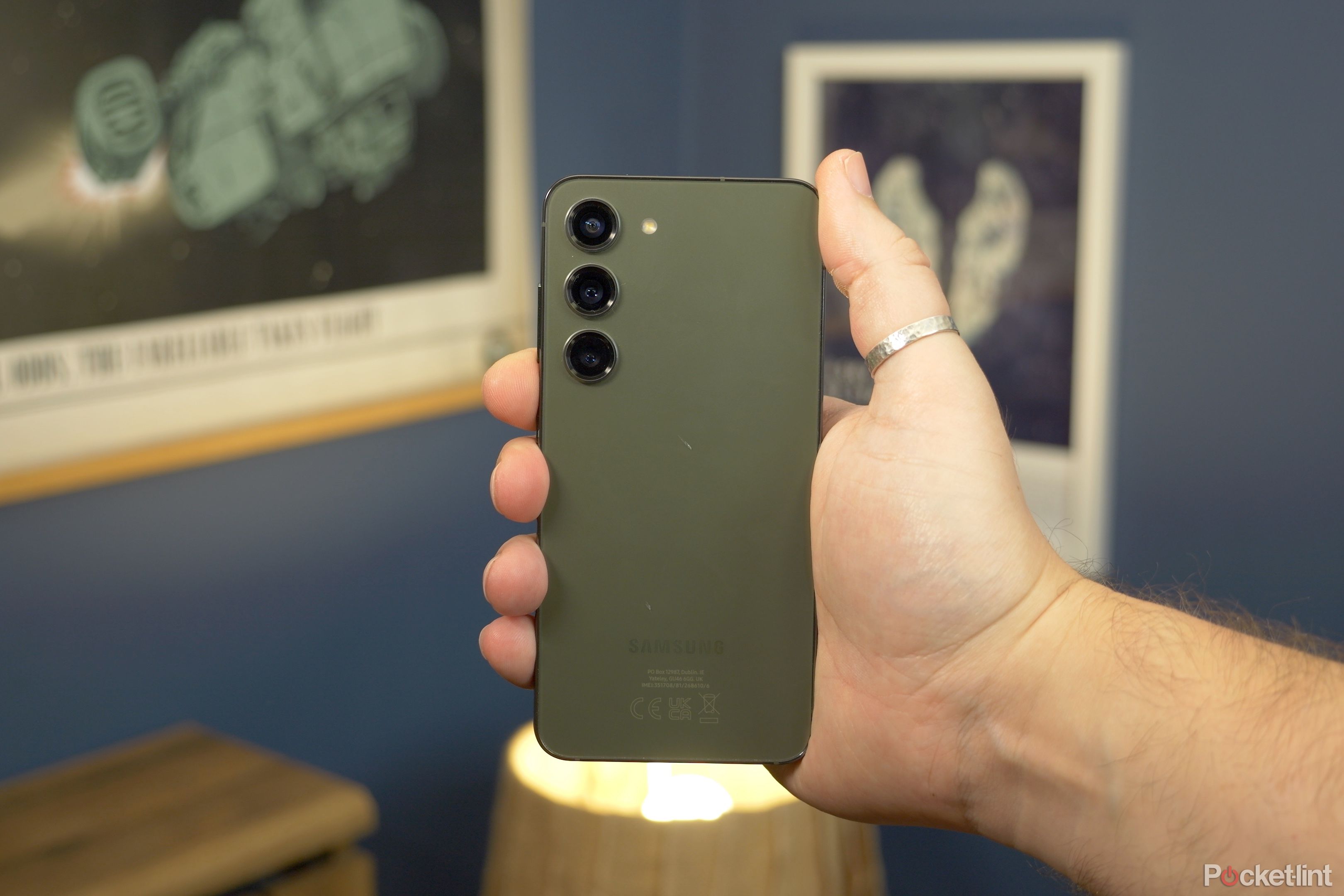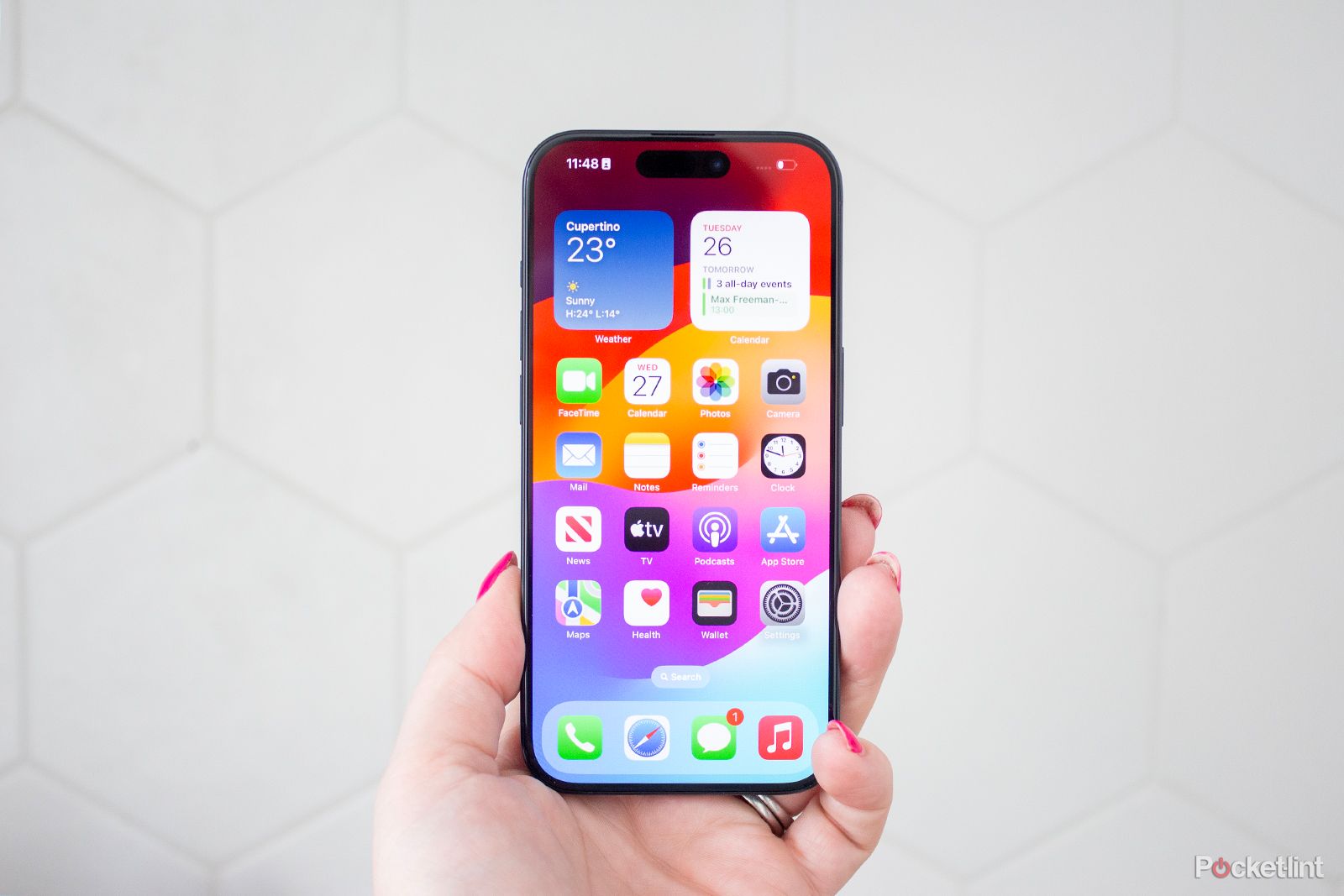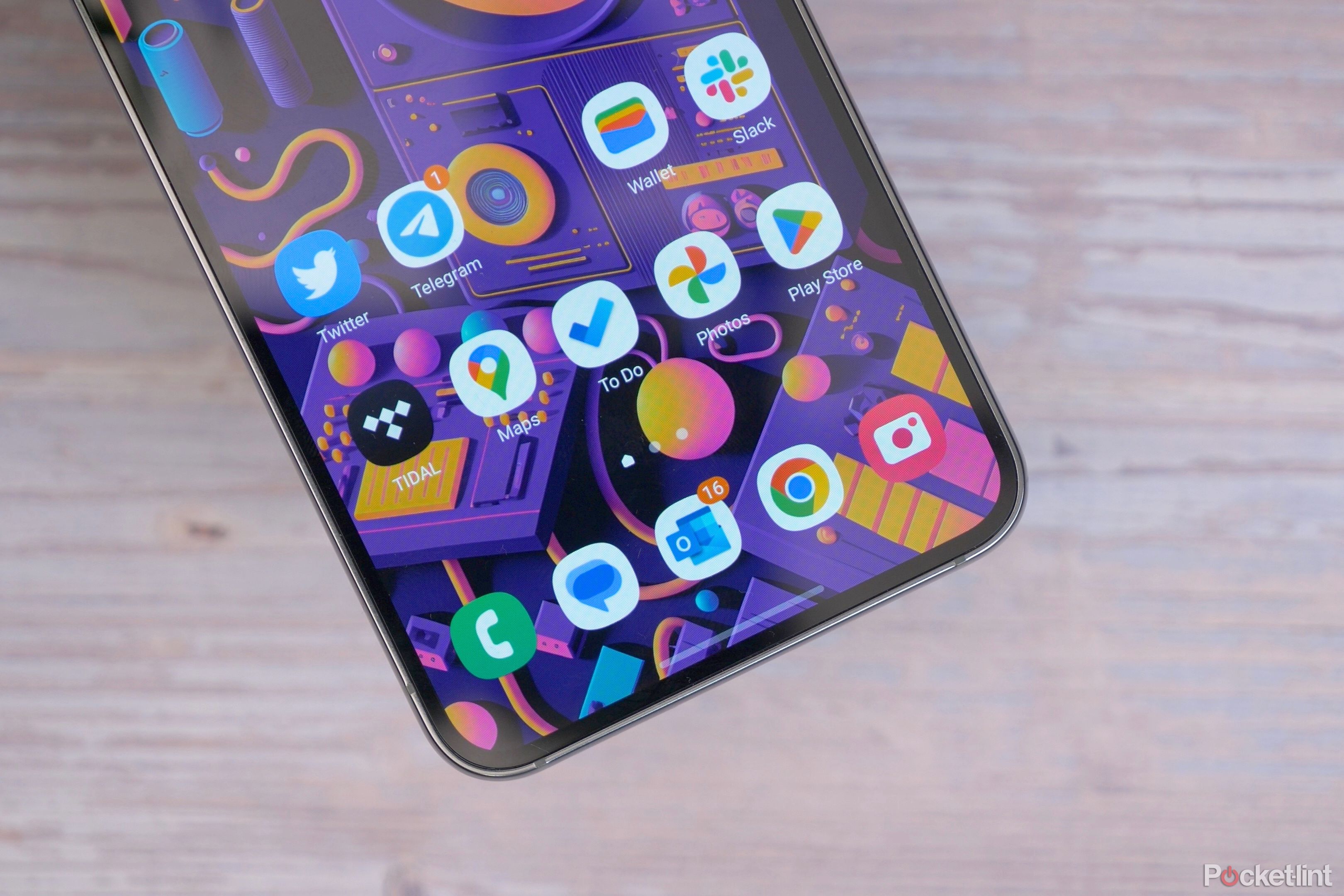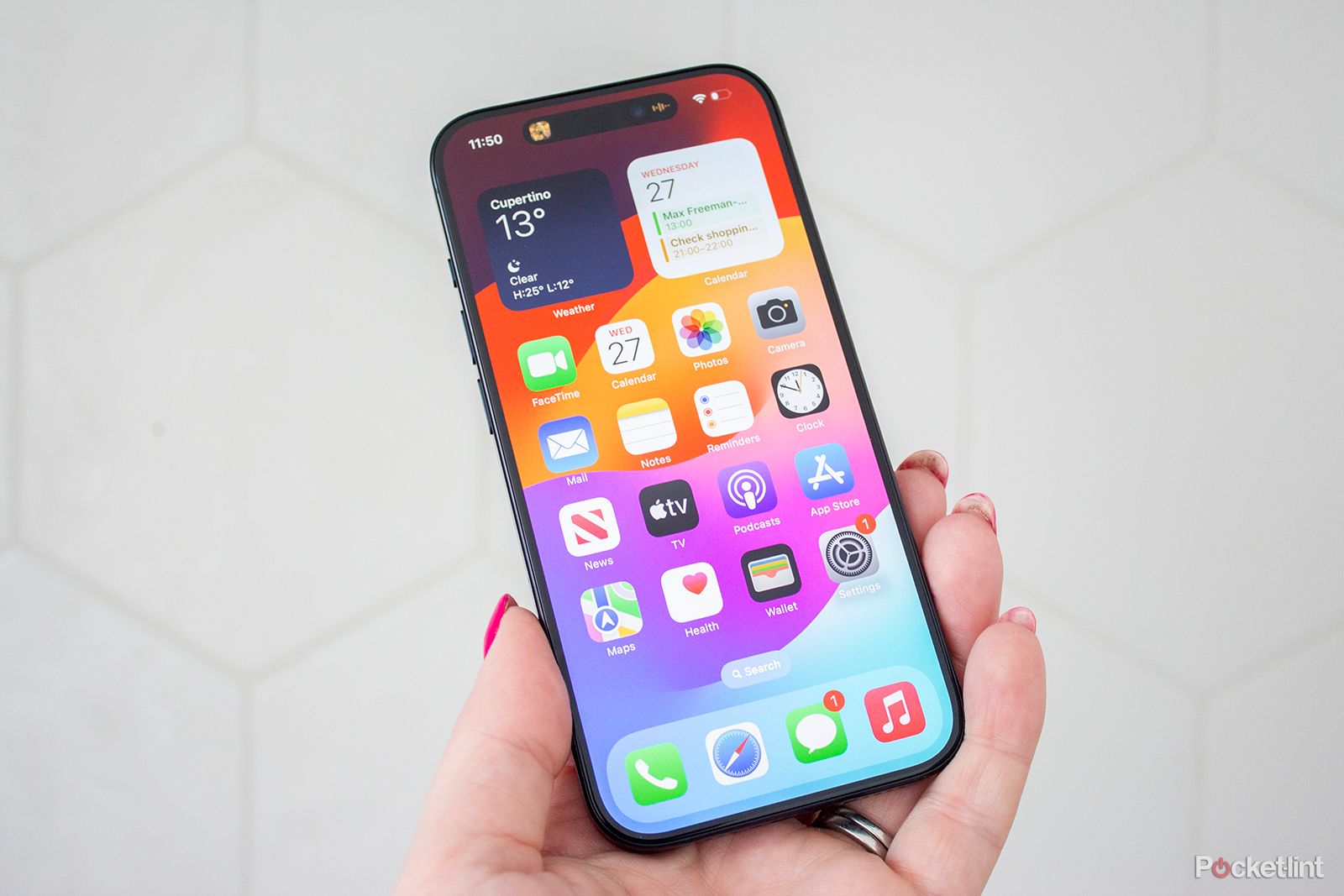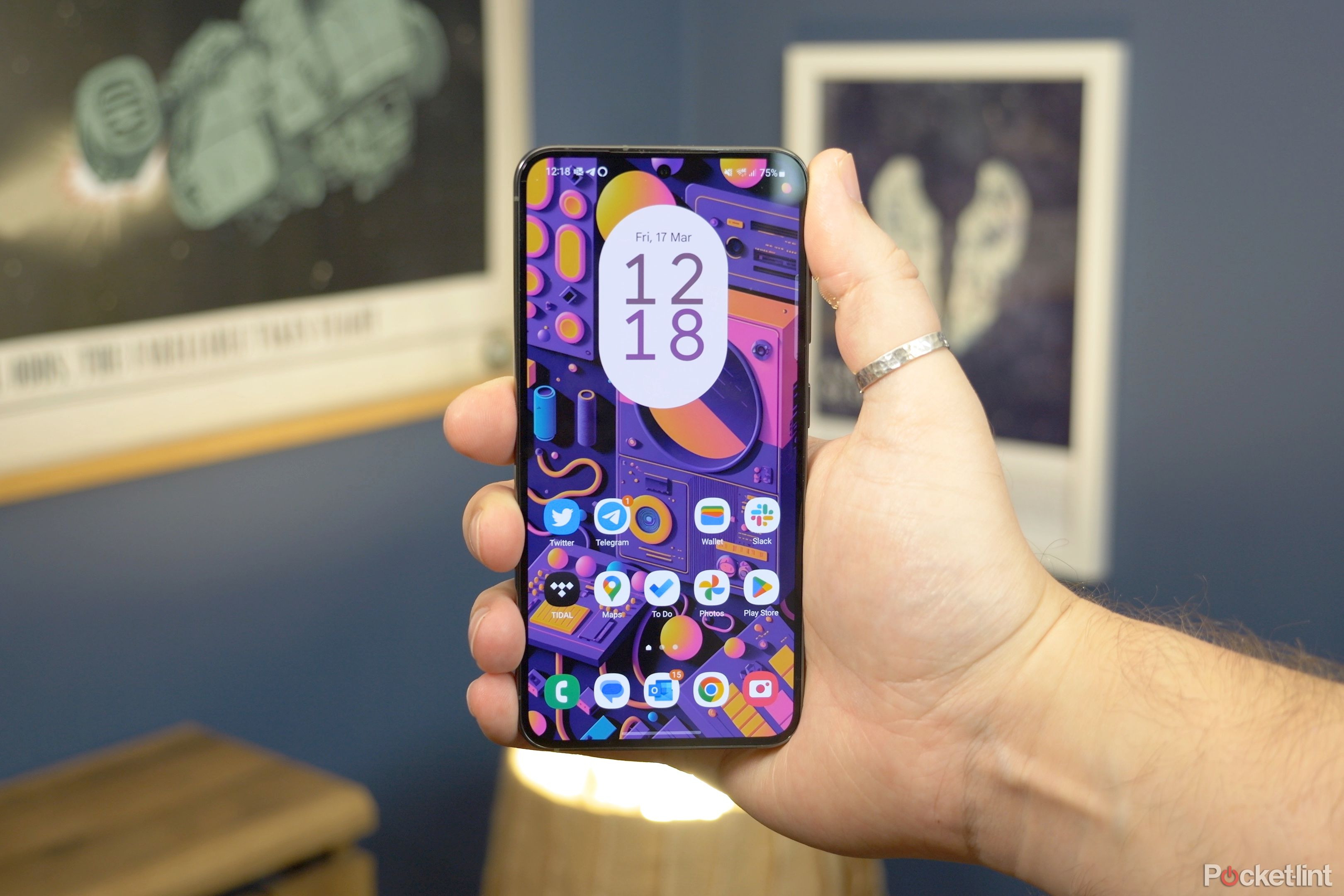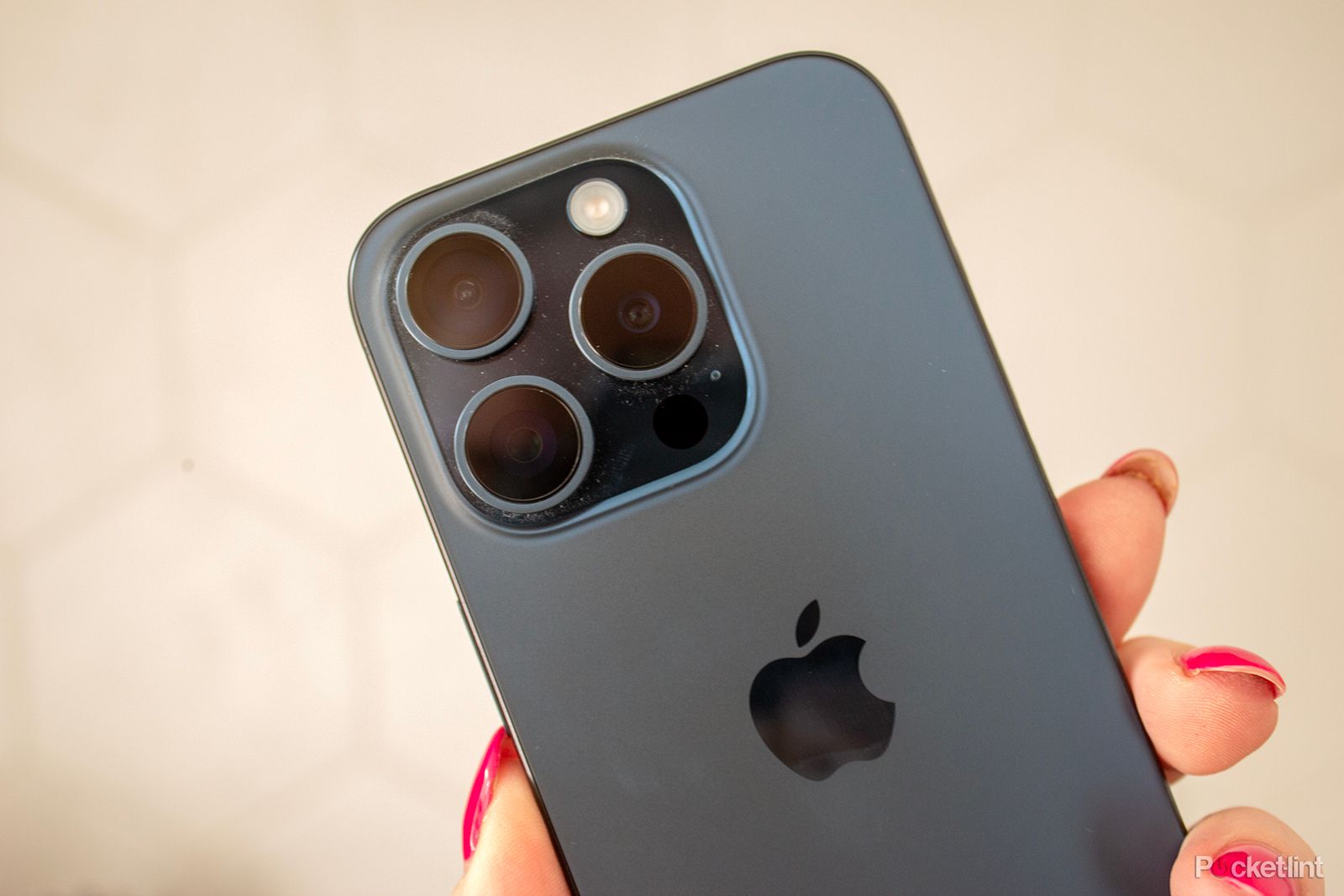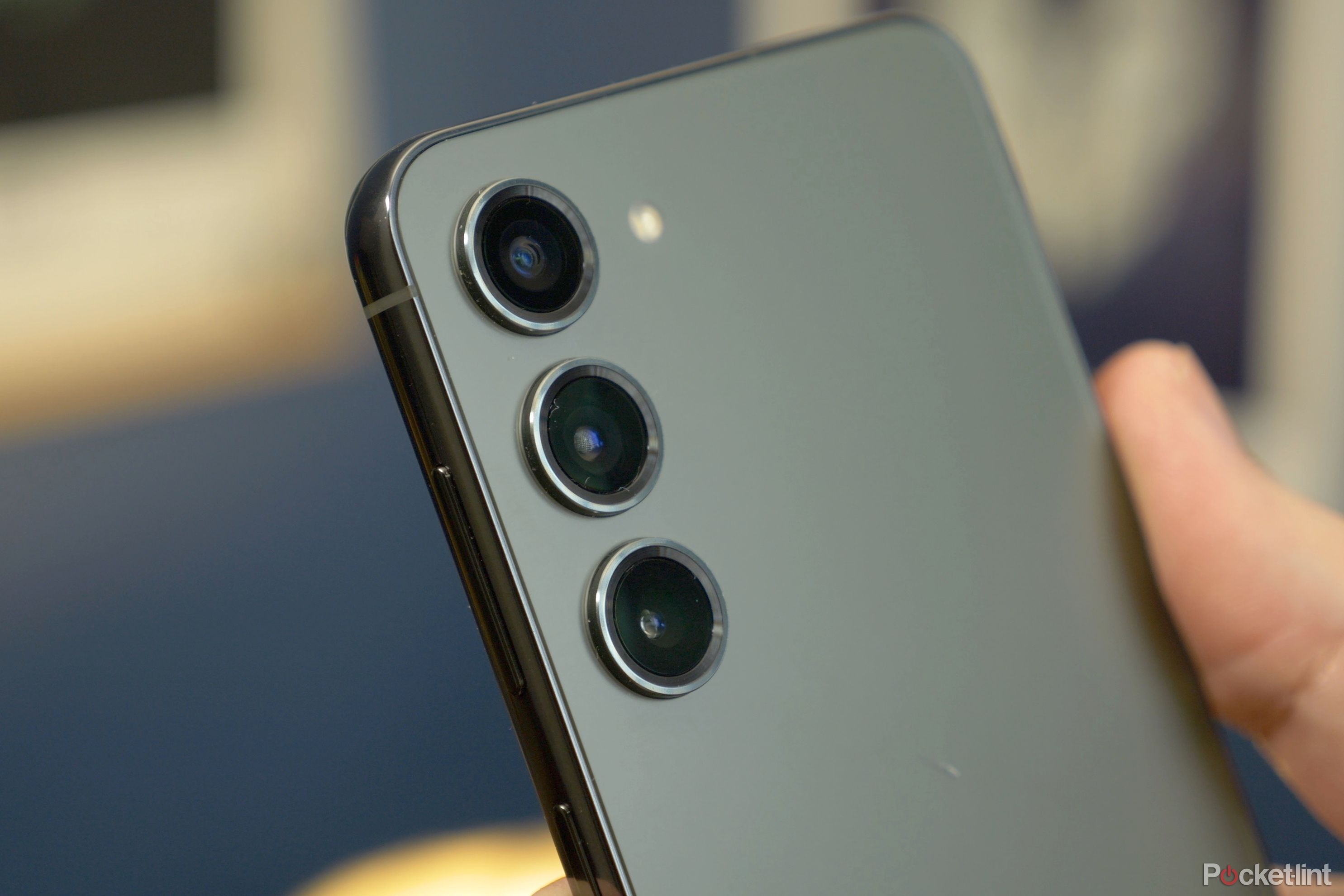-
Apple iPhone 15 Pro
Probably the best compact flagship in the world
If you’re looking for a complete flagship phone and are a fan of Apple devices, there really is only one good choice – you should get the iPhone 15 Pro. It’s the pinnacle of Apple’s engineering, combining stunning build quality with stellar performance and software.
Pros- Gorgeous design with a titanium frame
- Excellent performance
- Great display and camera
Cons- Missed out on the periscope zoom from the iPhone 15 Pro Max
- Slow charging speeds
-
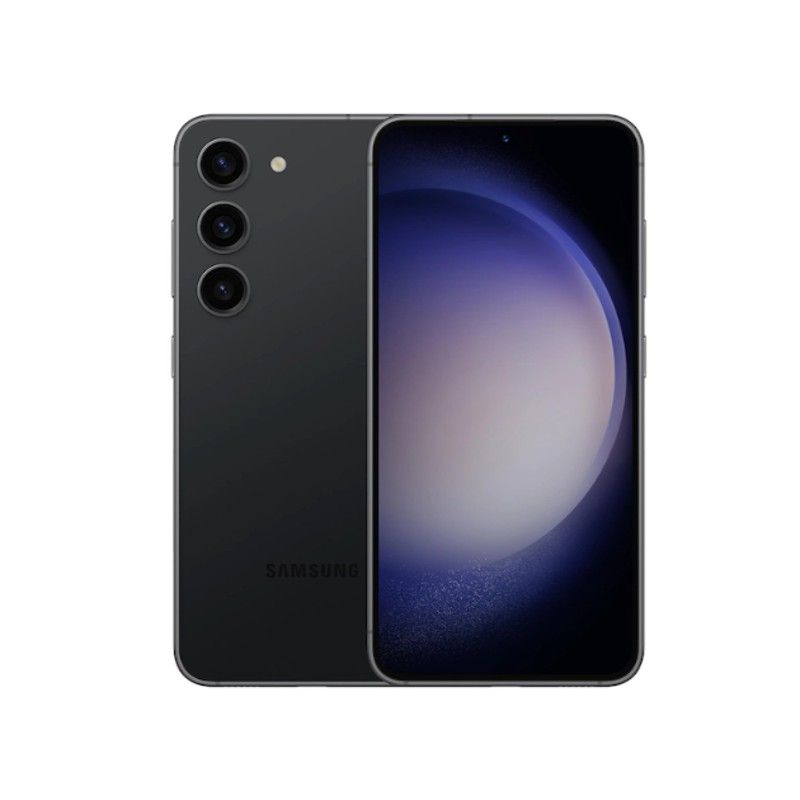
Samsung Galaxy S23
The compact flagship for the Android lovers
The Android space has a few great contenders for the title of the best compact smartphone, but the Galaxy S23 is an awesome choice among them. It’s the right mixture of doing everything really well, making for a well-rounded smartphone that will not break the bank, but also fit in your pocket.
Pros- Slim, premium design
- Excellent, vivid display
- Decent battery life and performance
Cons- Photos tend to be a tad oversaturated
- Not that much different from the S22
Key Takeaways
- Flagship phones are getting bigger every year, but smaller compact phones are still available from brands like Samsung and Apple.
- The Samsung Galaxy S23 starts at $799 for the base model, while the iPhone 15 Pro is $200 more expensive, starting at $999.
- The iPhone 15 Pro has a powerful Apple A17 SoC and a sleek design with a brushed titanium body, while the Galaxy S23 has a Snapdragon 8 gen 2 SoC and a glossy glass back.
When shopping for phones today – especially if you’re looking for a flagship device – you are mostly spoiled for choice. Whether you want clean software, amazing photos or videos, great build quality or exclusive features, brands like Google, Xiaomi, OnePlus or Motorola have got you covered.
However, there is one choice that is often overlooked, and that is the size of the phone. Lately, flagship phones have been getting bigger every year, with most of them reaching surpreme sizes.
If that’s the development you like, the bigger screen sizes make for great news as it means more space to watch your favorite content, play games or just browse your apps. But those bigger displays are often accompanied by simply being unwieldy, barely fitting in your pockets (especially if you wear female clothing), and just being hard to use if you have smaller hands.
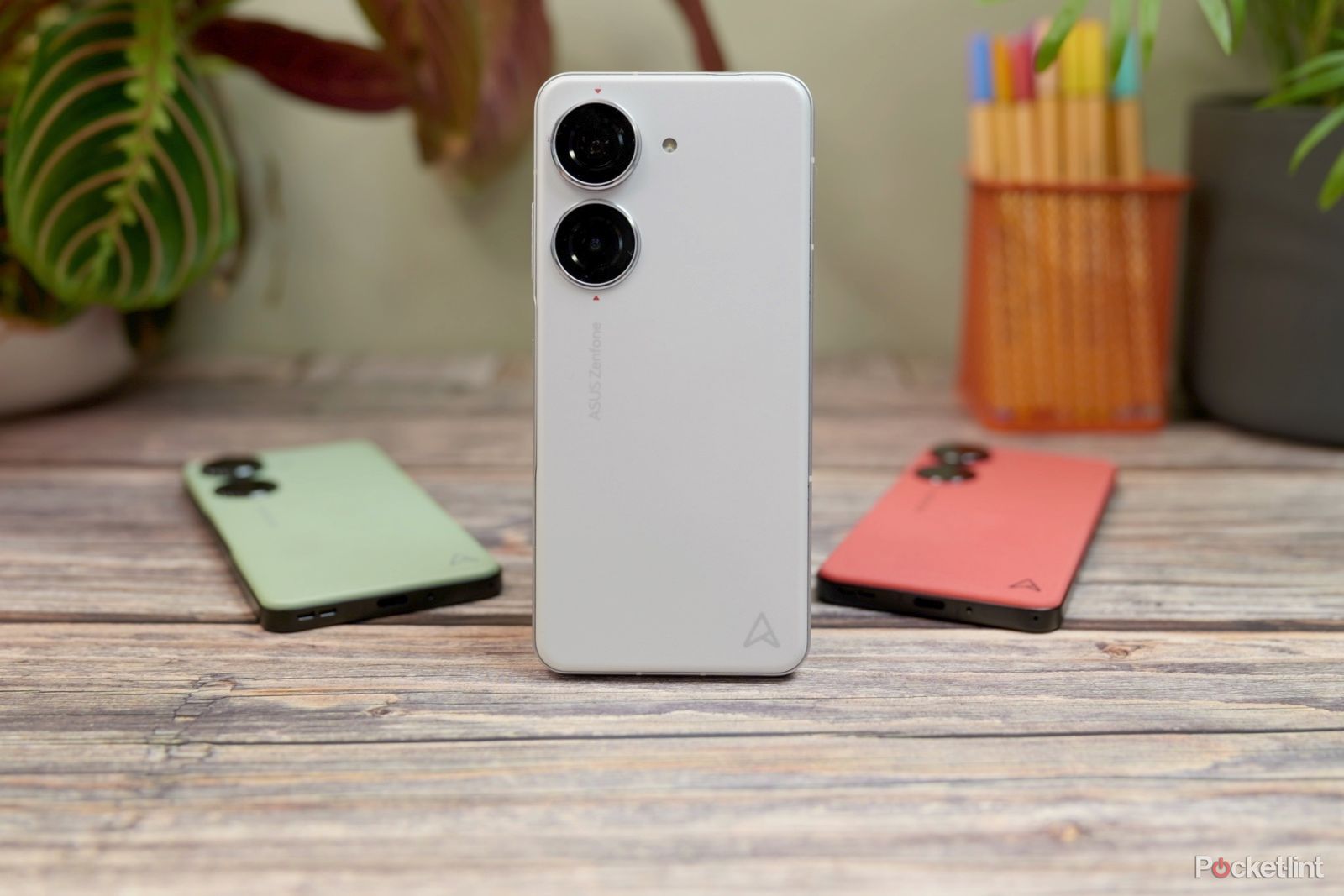
Best compact smartphones: Cutting down on size and compromise
Stop stretching your fingers with that handful of a phone. We’ve got some recommendations for smaller devices with the power you need.
Fortunately, there are still some companies that offer great compact phones. Of course, the Asus Zenfone 10 is probably the smallest flagship available now, but if you want to go for one of the mainstream brands, both the Android king Samsung, along with Apple, have something to offer for those that like their phones on the smaller side. iPhone 15 Pro and Samsung Galaxy S23 are fully-featured, flagship phones that do not compromise on features and specs while still maintaining smaller, more pocketable dimensions. With both, you get top-tier processors, a triple camera setup, and a stunning screen, crammed into a sleek body.
So, if you want to get yourself a smaller flagship, which one of these two is the better choice? Here’s all you need to know about them:
Price and availability
Starting with the Samsung Galaxy S23, the phone starts at $799 for the base model with 8GB of RAM and 128GB of storage. You can upgrade the storage to 256GB – this version costs a bit more, as it’s $859.
9:56


Samsung Galaxy S23 review: The compact flagship to buy
Looking for a powerful, feature-rich smartphone that’s also small and light? The Samsung Galaxy S23 is a superb choice.
The iPhone 15 Pro, on the other hand, is quite a bit more expensive. Its base model is a steep $200 more expensive, starting at $999 for the same 8/128GB configuration as the competitor today. You can expand the storage as well, and the iPhone has three more storage tiers: 256GB, 512GB and 1TB.
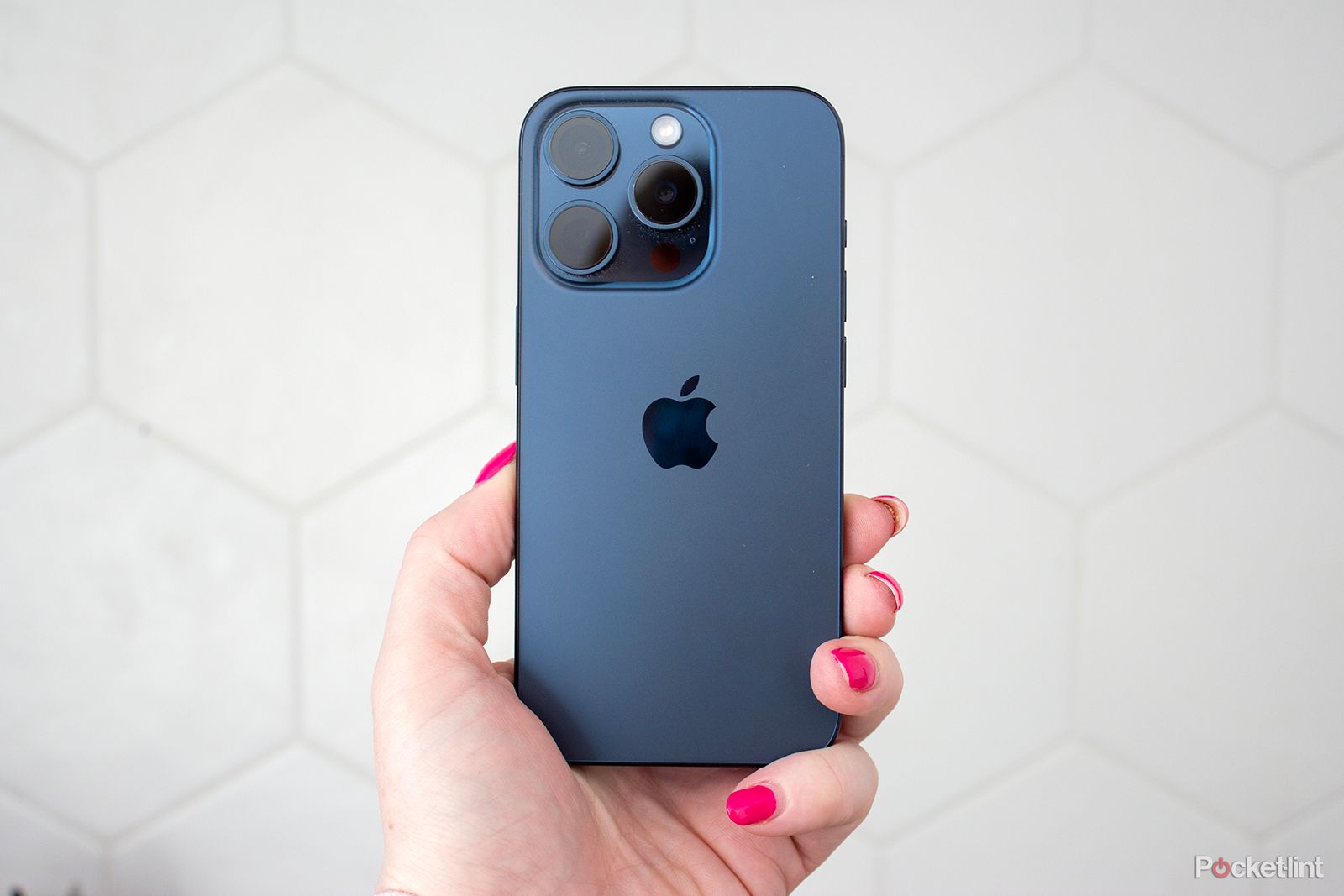
Apple iPhone 15 Pro review: Is it worth buying over the iPhone 15?
It’s got some stiff competition this year, not just from the iPhone 15 Pro Max, but the iPhone 15 too. So should you buy the iPhone 15 Pro?
Both of these phones have already been released, so you can easily find them both online and in physical stores. Galaxy S23 was released in February 2023, while the iPhone 15 Pro came to the market quite a bit later – in September 2023.
Specifications
-
Apple iPhone 15 Pro Samsung Galaxy S23 SoC Apple A17 Pro Snapdragon 8 Gen 2 Display 6.1-inch, OLED, 2556 x 1179, HDR, 2000nits, 120Hz 5.1-inch, 120 hz, AMOLED 2X Storage 128/256/512GB/1TB 128GB / 256GB / 512GB Battery 23 hours, fast charge 50% in 30 mins 20W wired, 15W MagSafe, 7.5W Qi wireless 3900mAh, 25W wired, 15W wireless Ports USB-C USB-C Dimensions 146.6 x 70.6 x 8.25mm, 187g 70.9 x 146.3 x 7.6mm, 168g IP Rating IP68 IP68
Starting with the heart of these handsets, the SoC, the iPhone 15 Pro sports the state-of-the-art Apple A17 SoC, which has 6 CPU and 6 GPU cores. Put directly, the A17 is an absolute beast and by far the most powerful mobile chip to date, so even if you’re doing anything intensive like playing games or rendering videos, you shouldn’t feel any slowdown either now, or quite a few years down the road. The SoC is supported by 8GB of RAM. Other notable features include the IP68 water-resistance rating, Bluetooth 5.3 and Wi-Fi 6e support. It’s also worth mentioning that it’s the first iPhone to finally get a USB-C charging port, instead of the aging Lightning. What’s more, the port itself supports the USB 3.2 Gen 2 standard, so it’s not only versatile but also supports extremely fast data transfers.
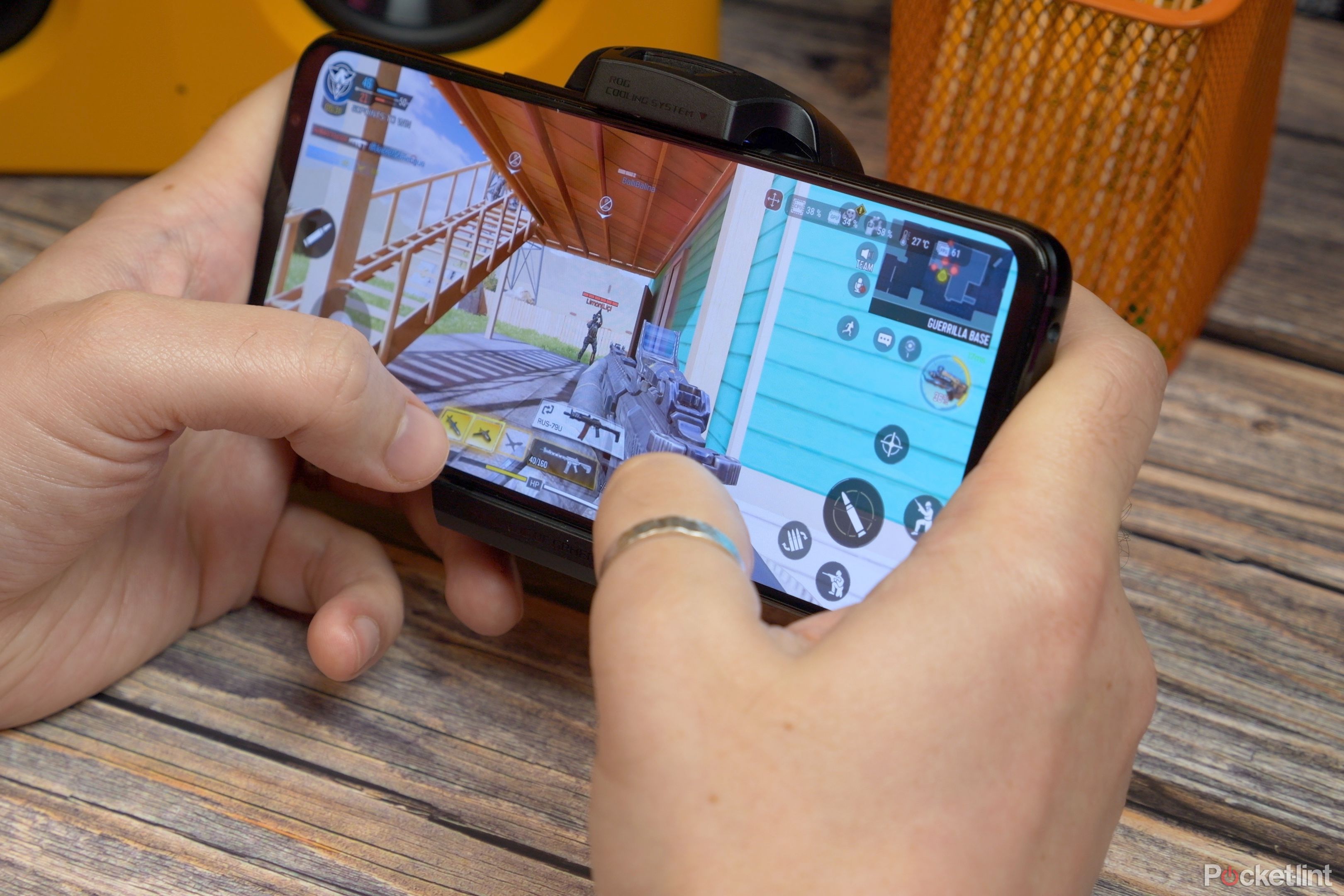
Best gaming phone: Top picks from ROG, RedMagic, and more
These powerful handsets let you game on the go, providing punchy graphics, great sound, and long battery life.
Samsung Galaxy S23 is no slouch either. Its SoC – the Snapdragon 8 gen 2 -is a bit slower than what Apple has in store, but it’s an extremely capable, powerful chip that will easily deal with anything you throw its way, making it great both now, and in the future. It’s also paired with 8GB of RAM. The Galaxy S23 features the IP68 water resistance rating, as well as Bluetooth 5.3 and Wi-Fi 6e support. As is standard on every modern phone now, it too has a USB-C charging port which supports USB 3.2 Gen 2 as well.
Design
Apple, as a company known for its design prowess, did not disappoint with the iPhone 15 Pro. It’s a great form factor – the 6.1-inch screen together with nice, slim bezels makes the phone’s dimensions a really pocketable 146.6 x 70.6 x 8.3 mm. What’s even better is that the phone, instead of the standard aluminum or stainless steel, is now made out of brushed titanium with flat edges. This not only makes it lighter (the phone now weighs only 168g) and more durable, but also leaves it feeling much more premium than the competition – this alloy does give you the “something extra” that you’d expect from an Apple product.
0:56

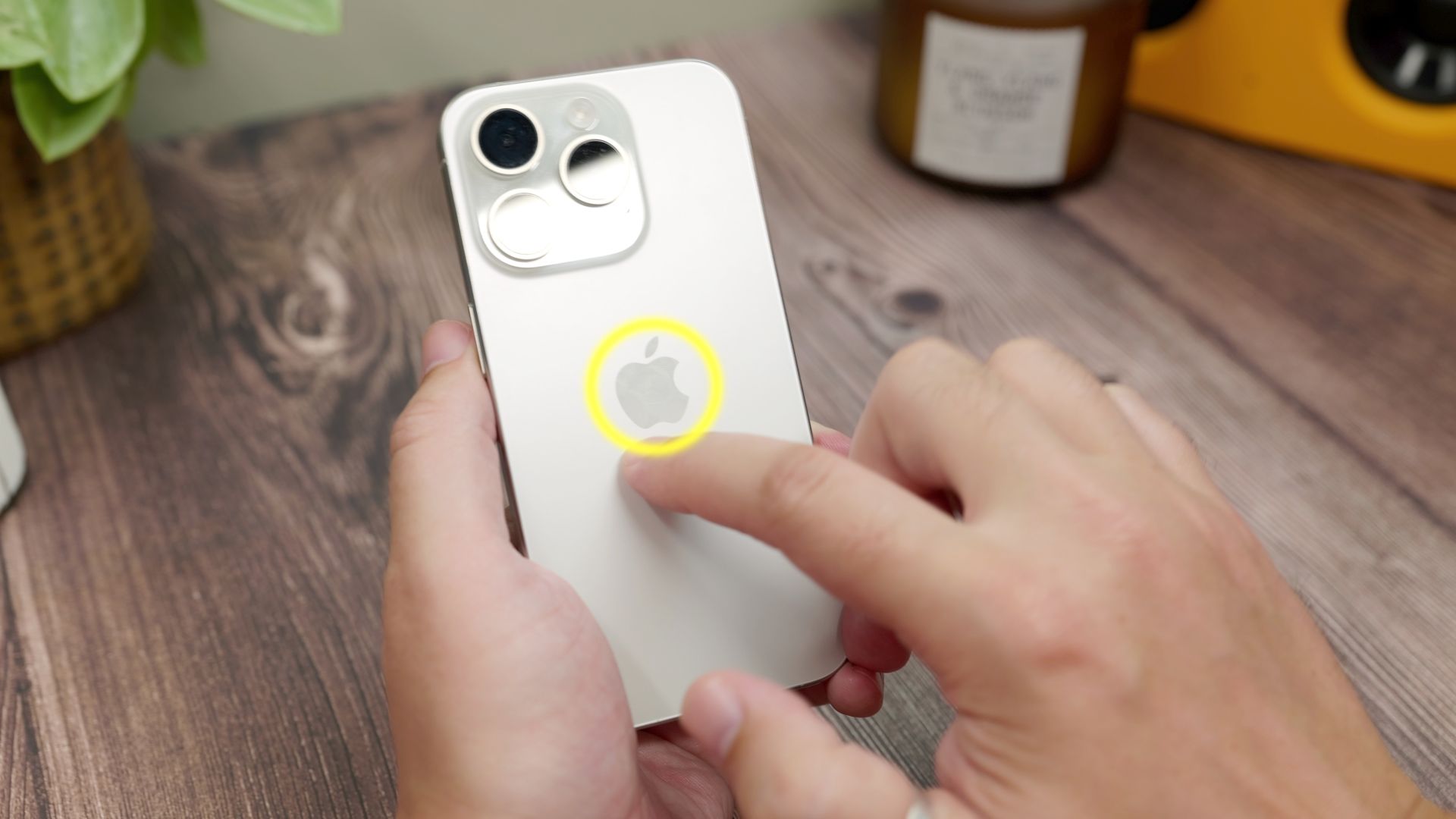
How to use the iPhone Apple logo as a secret button
You can program the Apple logo on the back of your iPhone to be a secret button when you double tap or triple tap it. Here’s how to set Back Tap up.
Aside from the titanium, Apple went for a matte glass back and toned down colors you’d expect from the “Pro” lineup: Gray, Black, White and Blue. There are also two more changes. I’ve mentioned the inclusion of USB-C for charging and data transfer, but the new iPhone also lacks a staple of the line for many years – the mute switch. Instead, you’ll find an Action Button there. It’s a programmable button that you can personalize to your liking – it can still act like a mute switch, but you can also program it to do other functions that you’d like to have a dedicated shortcut for. At the back, you get the familiar 3-camera setup and an Apple logo.
Moving on to the Galaxy S23 – this is also a nice, premium-looking phone. It goes without saying that its aluminum chassis does not feel as good as the titanium on the iPhone, but the fit and finish are equally good, making for a nice flagship. Samsung even manages to be a bit smaller than the Apple phone, measuring 146.3 x 70.9 x 7.6 mm – especially the difference in thinness is quite noticeable here.
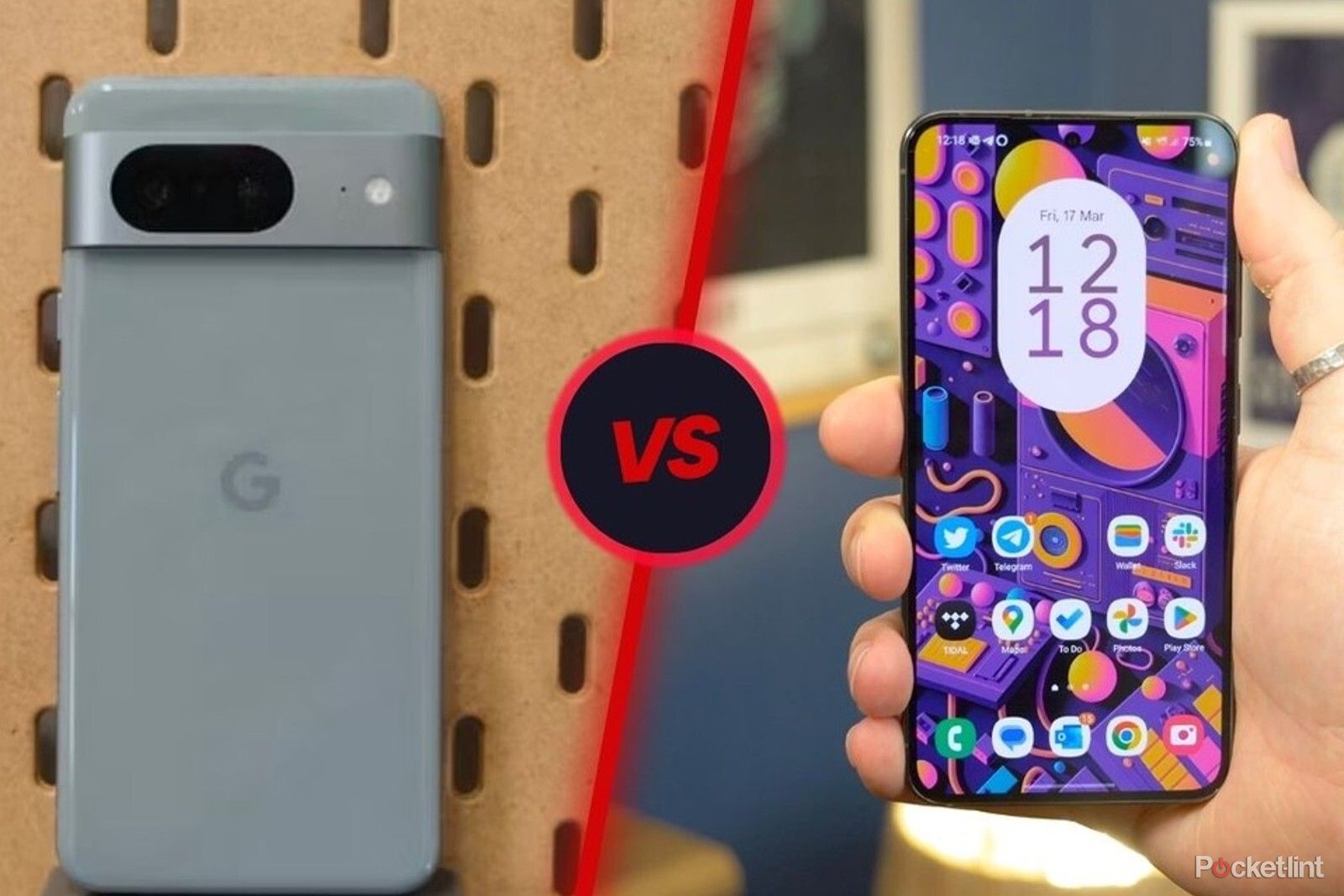
Pixel 8 vs Samsung Galaxy S23: Battle of the sub-$1,000 flagships
The Pixel 8 and the Galaxy S23 are two of the best smaller smartphones on the market. Which one is the best? Let’s find out.
At the back, Galaxy S23 also goes for a glass cover, but the Korean manufacturer opted for a glossy finish. It does look better in my opinion, but it’s a slo a fingerprint magnet – so you get some, you lose some. There are also three vertically stacked cameras, a Samsung logo and a small flash. The phone comes in four colors which are much more lively than toned-down iPhone colors: Black, Cream, Lavender and Green. Rounding things up, you also get a USB-C charging port, but no action button – after the failure of Bixby, Samsung gave up on this idea, sticking to the usual volume rocker and power button combo.
Software
There is no beating around the bush anymore – the biggest difference between these two phones will not come down to their design or hardware but to their respective software. Both Apple and Samsung went all-in into creating its product ecosystems, where its phones are the centerpiece of it all, but the companies did that with completely different mindsets and goals in mind.
The iPhone 15 Pro is running the newest version of iOS 17. There is quite a lot to be said about iOS, good and bad, but you can’t deny it being one of the most polished, well-rounded mobile operating systems. It is a completely closed-down system, so forget about sideloading your apps or modifying the UI in any way that Apple did not think about, but in return, you get a smooth, familiar experience with tons of well-optimized apps.
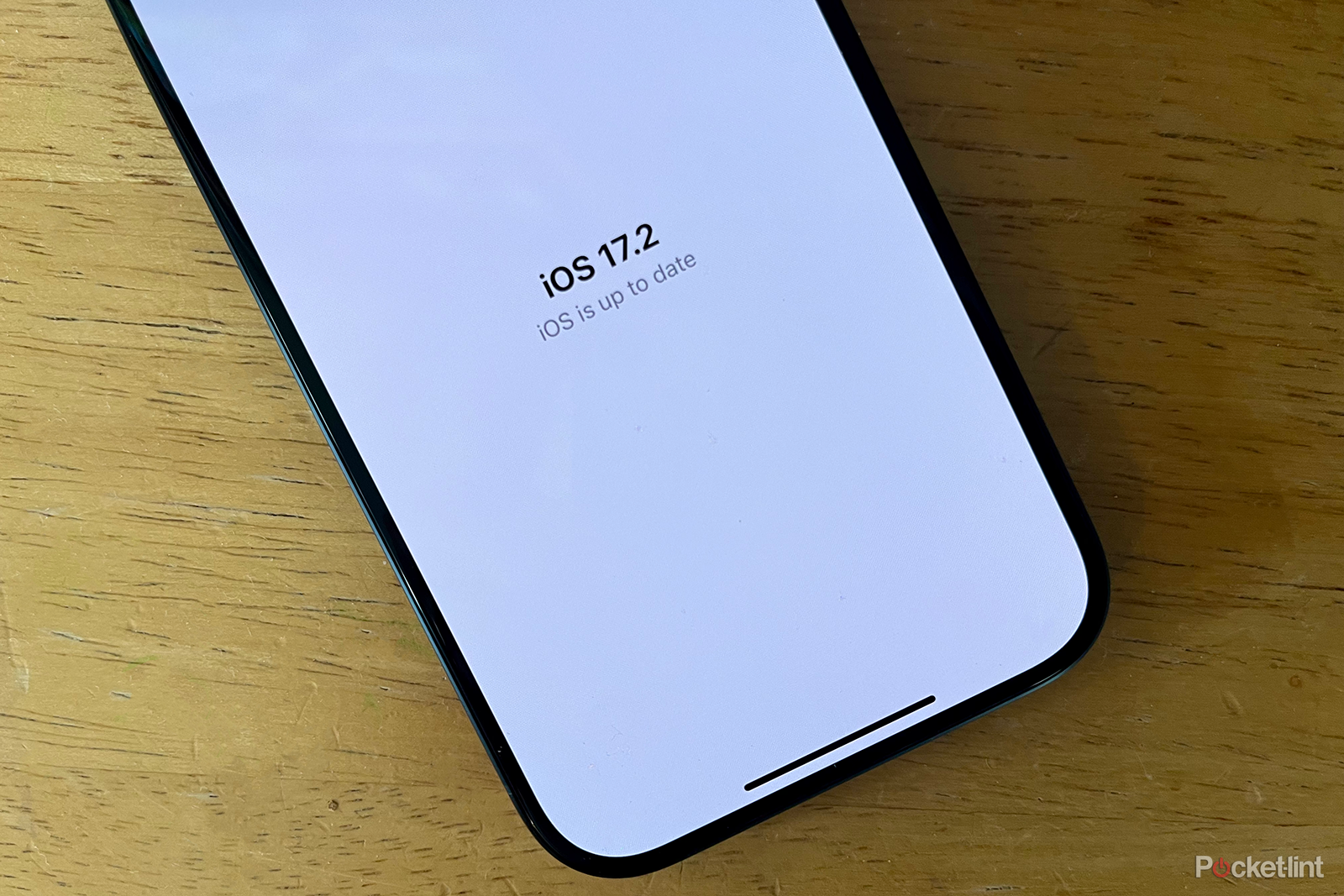
Apple’s latest iPhone update is here, and it brings long-awaited Journal app
The iOS 17.2 update is available for your iPhone. Download it now to use Apple’s new Journal app.
What’s more, for the last few years Apple did open the system up a bit for its users to personalize the handset, so lately each phone has become much more personal. Plus, with how widespread iPhones are in the US, you can be pretty sure that if there is an app for something, it’ll surely be available on iOS, and it’ll be well-optimized – something that Android still seems to struggle with a bit in America. To top all of it off, you have the aforementioned ecosystem. All the Apple devices work great with one another, so if you already have a Mac, an iPad, or an Apple Watch, that’s a great combination for your iPhone. One more thing to mention – aside from the regular connectivity options, the iPhone also adds satellite connectivity, enabling SOS communication even if you’re out of mobile network range.
On the other hand, Samsung is the most popular company making Android phones in the US, and its idea of software is quite a bit different. It’s running Samsung’s custom Android skin called OneUI. Right now, it’s already on OneUI 6.0 which is based on Android 14. As with all Android phones, the best thing about it is the freedom to do what you want – freely change your UI, sideload apps and all that good stuff. Samsung does bring quite a lot of its own innovations to the table though – great multi-windows multitasking capabilities, DeX desktop mode and just a slew of other handy features that you can discover on your own. It also works great with other Samsung devices, such as the Galaxy Tab series or the Galaxy Watch, but contrary to competitors, Samsung devices also work great with other Android accessories, so you can mix and match different manufacturers based on what you want and need.
Display
I’d argue that the screen is, ultimately, the most important part of your phone. That’s the thing you look at every time you want to use it, so when it’s crisp, responsive and bright, just about everything looks and feels good when browsing content on such a display.
Let’s get into the details then. Apple is using what it calls a Super Retina XDR display for its iPhone 15 Pro. It’s an OLED panel with a resolution of 2556 x 1179 pixels and a dynamic 1-120 Hz refresh rate. It’s 6.1-inches in diameter and Apple covers it with its Ceramic Shield glass. It supports 1000 nits of sustained brightness and 2000 nits of peak brightness. The display is flat, without curved edges, and features a Dynamic Island – a cutout for the camera and Apple’s FaceID tech.
Samsung’s Galaxy S23 on the other hand, comes equipped with a Dynamic AMOLED 2X screen with a resolution of 2380 x 1080 pixels and a dynamic 48-120 Hz refresh rate. It’s also 6.1-inches in diameter and is covered with Corning’s latest Gorilla Glass Victus 2. Its peak brightness is a touch lower, coming at 1750 nits, but Samsung claims a higher sustained brightness of 1200 nits. Samsung also went for a flat panel this time around, with a much smaller camera cutout in the middle of the screen’s upper edge.
Overall, it’s hard to say which one of these screens is better – they are both magnificent to look at and are the pinnacle of mobile display technology. There are subtle differences – Apple’s dynamic refresh rate goes down to 1Hz, which should give it an edge in battery life, but Samsung’s screen should have a higher sustained brightness. In any case, if you’re looking for a phone with an out-of-this-world display, both of these will suit you just fine.
Cameras
Aside from the display, another area where both of these phones are extremely similarly matched are their cameras. If you want your phone to take great photos in all conditions – these two are probably, maybe aside from the Pixel 8 Pro, your two best choices. They have similar triple camera setups, great additional modes and features, and versatile lenses. Plus, both of them take really decent selfies.
Starting with the main shooter, the iPhone 15 Pro has a spectacular 48 MP main sensor with sensor cropping technology, essentially giving you the equivalent of three more focal lengths (48mm, 35mm and 28mm). The picture quality itself is great, albeit with the standard iPhone oversharpening. However, the pictures are incredibly bright and detailed, with natural colors. The camera also works great in worse lighting conditions, utilizing the 1/1.28-inch sensor to its fullest.
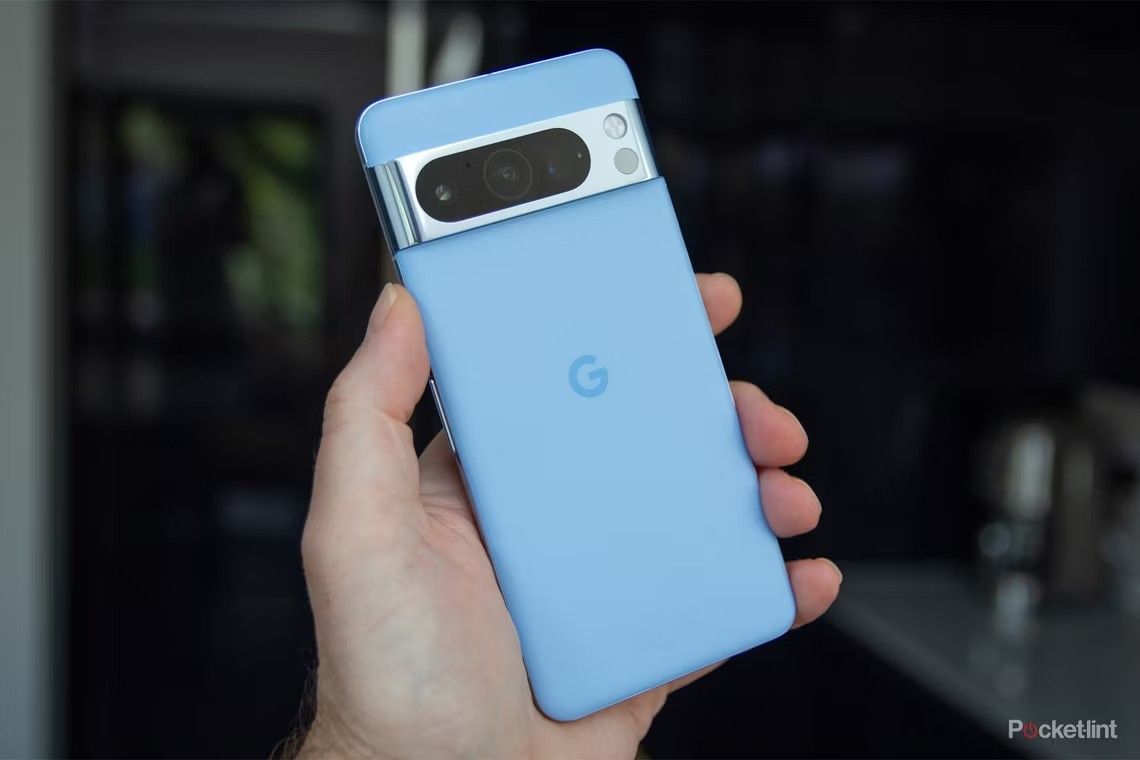
Best camera phones: Handsets that take pro photos and videos
With the best camera phones, you can take take pro-level photos and videos without the bulky DSLR bag.
The Galaxy S23 on the other hand sports a 50MP main sensor which is a bit smaller than the iPhone – only 1/1.56-inch. However, the photos look great, and the lens is equally capable as the iPhone in dealing with worse lighting conditions. The pictures look spot-on when it comes to sharpness – a stark contrast to the iPhone’s look – but they are a tad oversaturated, which is something all Samsung cameras are known for. Aside from that, it’s a really capable, versatile camera.
The other lenses on both of these devices are not as good as their main ones. The iPhone 15 Pro is equipped with a 12MP ultrawide lens and a 12MP 3x zoom lens, making for a well-rounded setup. Its 12 MP selfie camera completes the picture. Unfortunately, the iPhone 15 Pro missed out on the periscope telephoto lens from the Pro Max, so the zoomed-in pictures will not look as great on the smaller model.
Samsung has a really similar setup of secondary cameras, going for a 12MP ultrawide lens and a 10MP 3x telephoto. Once again, both of these are slightly on the smaller side compared to the iPhone, so you might notice a small disadvantage in darker environments. Samsung is also equipped with a 12MP selfie cam.
The one thing where the iPhone – as always – shines well above the Samsung is video. Even though it only records in 4K 60FPS, compared to the Samsung’s 8K 30 FPS max resolution, videos from the iPhone are much better quality, with better stabilization and color science – plus they just look so much better. The competition still has miles to go before it catches up to the iPhone’s video capabilities.
Battery and charging
No flagship experience would be enjoyable without a decent battery life – you don’t want your smartphone, however powerful and premium-feeling, to be tethered to your charger all the time. Fortunately, both of these phones are excellent at keeping you connected for a long time. Unfortunately, they also both disappointed with their charging speeds.
Picking up iPhone 15 Pro’s spec sheet might make you a bit hesitant – it only sports a relatively small, 3274 mAh battery. However, size isn’t everything, and Apple does know how to use it – meaning that the newest iPhone is an extremely efficient phone, with a power-sipping chip and great optimization. This means that even though the cell itself is small compared to the competition, its battery life is still very decent. In our testing, it comfortably lasted for a whole busy day, with around 20 percent battery to spare at the end of it.
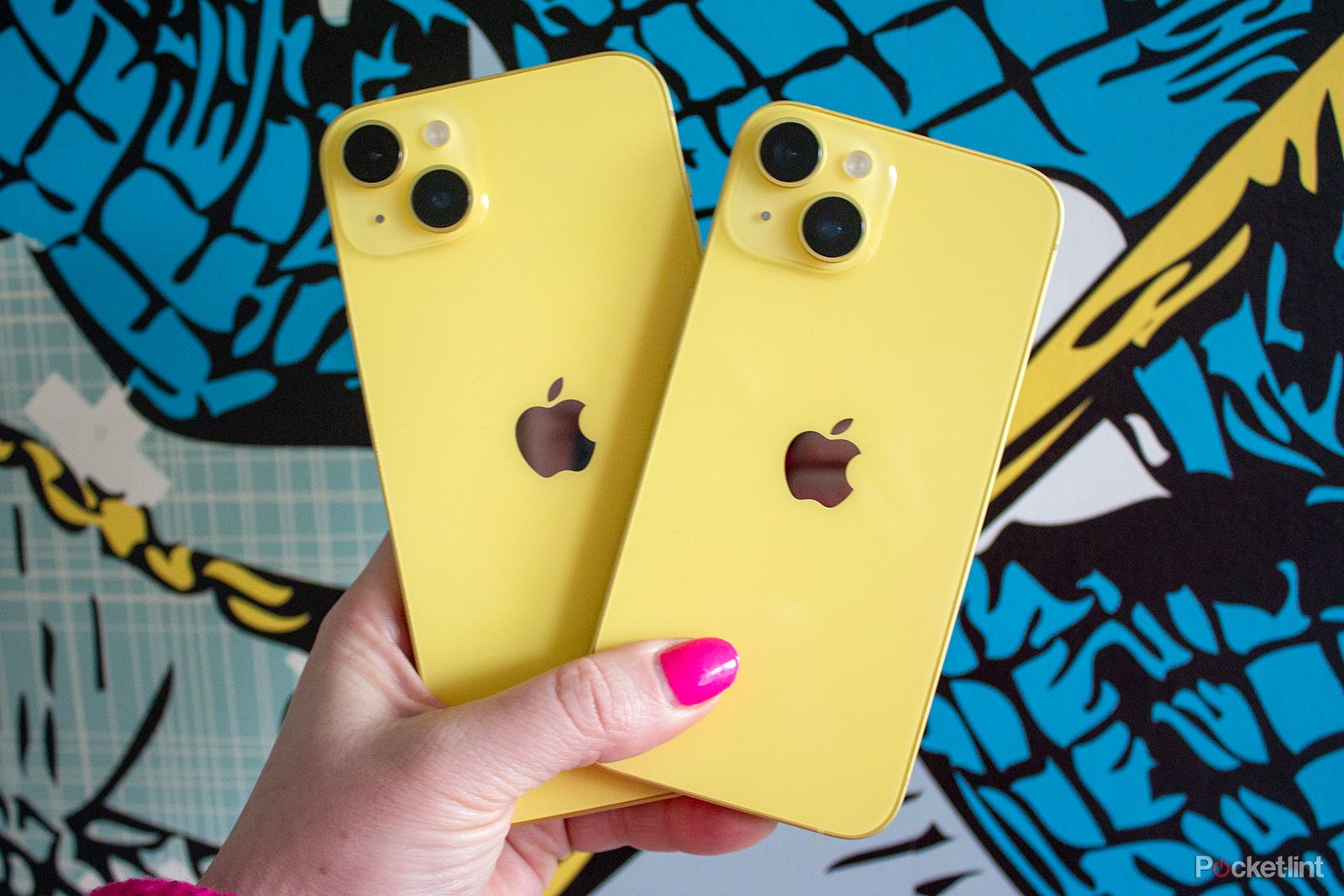
Apple brings Qi2 charging to older iPhones, these are the best wireless chargers you can buy right now
Old phones typically don’t receive new features, but with iOS17.2, the company is updating iPhone 13 and 14 models to support Qi2 charging.
The Galaxy S23 offers a more typical 3900 mAh battery, making it more in line with the rest of the compact smartphone competition. In our testing it behaved very similarly to the iPhone, leaving you with around 20% of battery at the end of the day.
What is not great about either the iPhone, or the Galaxy, are their charging speeds. With flagship phones nowadays giving users rapid charging left and right, both of these opt for relatively slow charging speeds – and do not even give you chargers in the box.
Samsung tops out at 25W wired charging and 15W wireless – not very impressive. The iPhone is almost the same, topping at 27W and 15W wireless charging speeds. These phones do, admittedly, have smaller batteries, so you should expect them to fill up in under an hour and a half, but compared to the competition, such speeds are painfully slow.
iPhone 15 Pro vs. Galaxy S23: Which one should you choose?
Comparing the iPhone to any Android device, no matter how good and different, is always a tough choice. It will usually come down to the same answer – ultimately, you should get the phone with the software you prefer.
However, looking at the specs alone, the iPhone 15 Pro probably edges out the Galaxy S23 and takes the win. Granted, it is $200 more expensive, but you get an insane titanium chassis, arguably a bit better cameras, a stunning display and the best performance available in the mobile space. Additionally, it works well across all Apple ecosystem products.
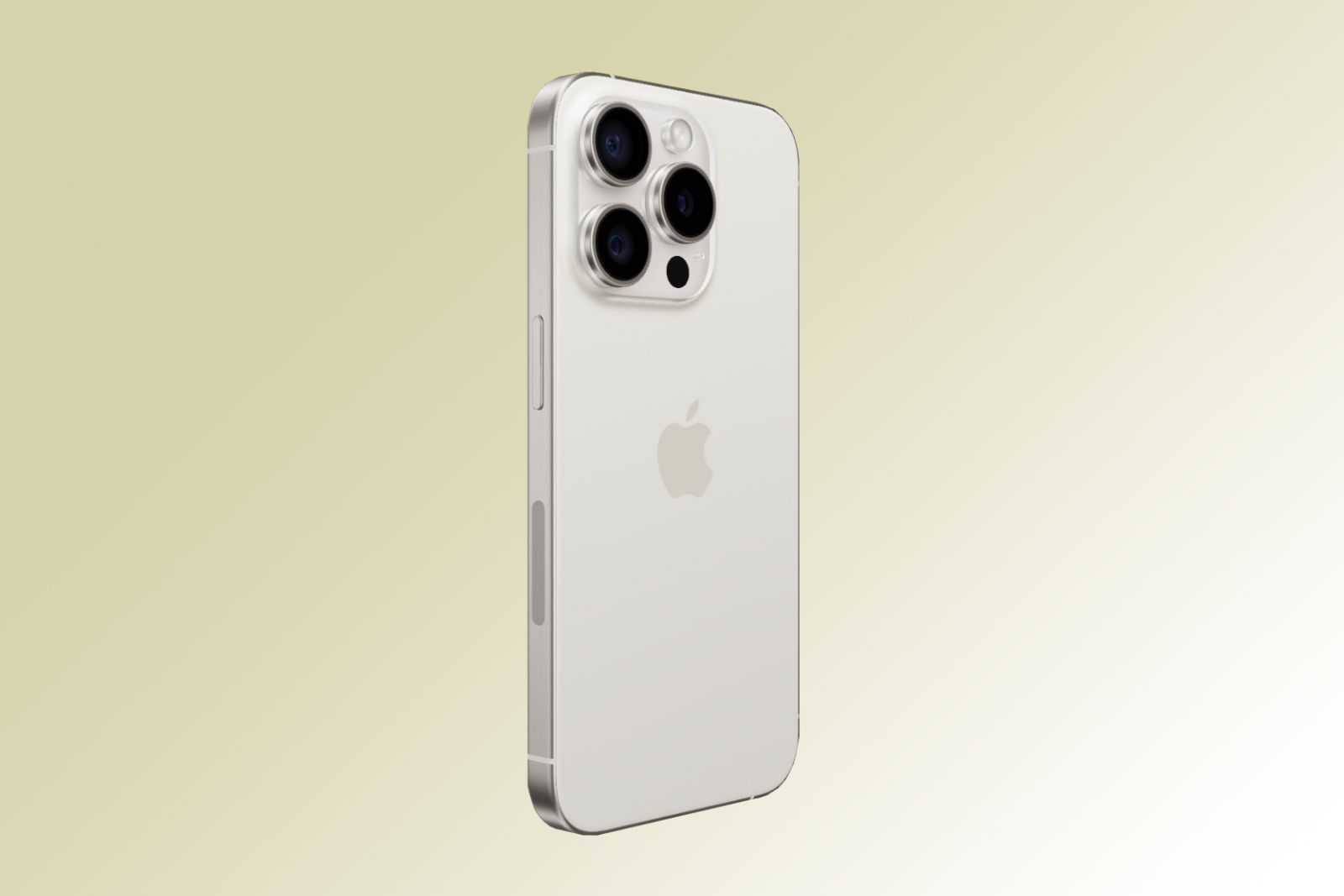
It has to be said that the Samsung Galaxy S23 is not far behind – on the contrary. For much less, you get an amazing, compact phone with a display that might be even slightly better, a great and versatile camera system and all the great features of Android with a little bit of that Samsung sparkle on top – it’s nothing to scoff at. If you like Android, or simply want to finally get out of Apple’s “walled garden,” the Galaxy S23 is a great choice.
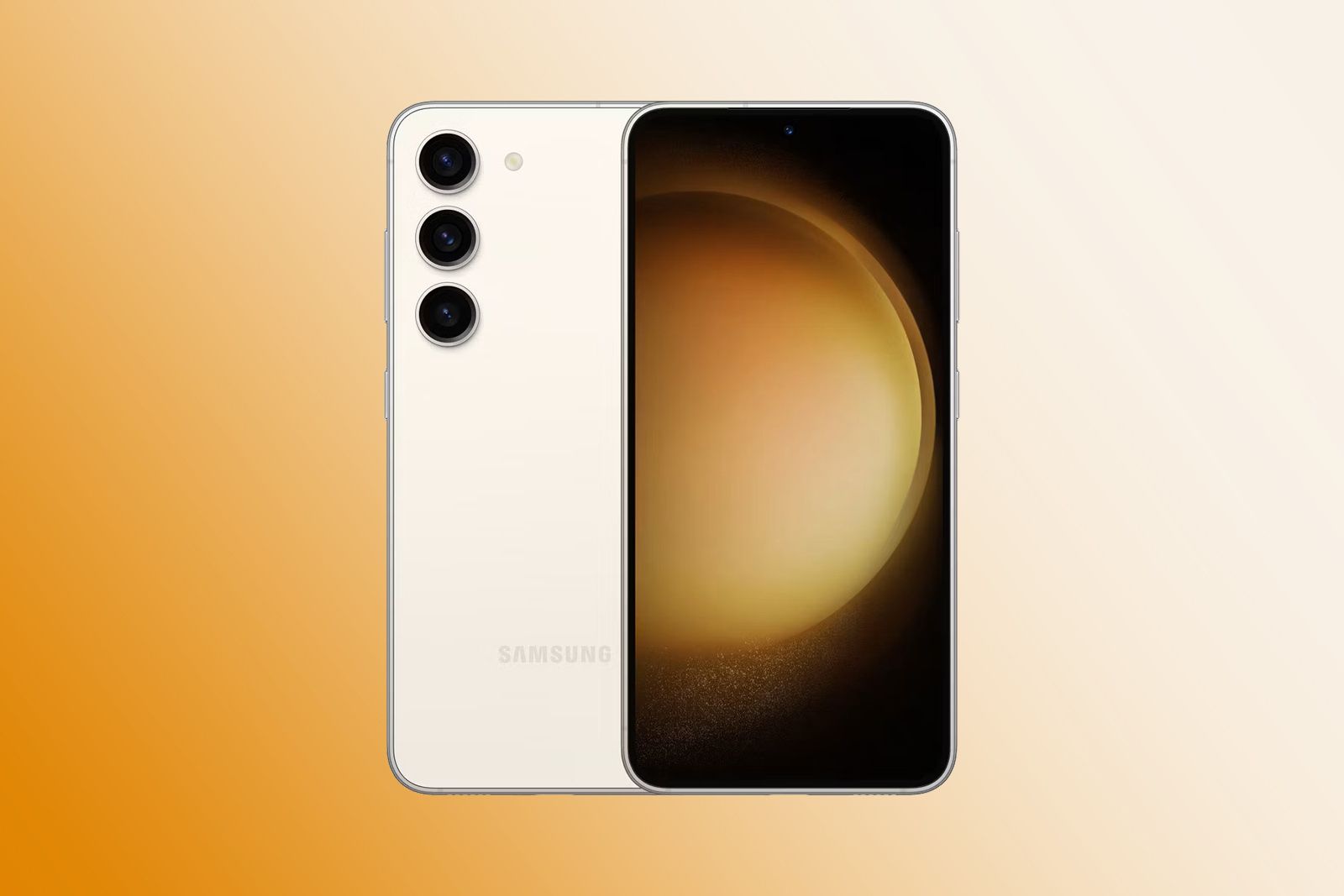
Trending Products

Cooler Master MasterBox Q300L Micro-ATX Tower with Magnetic Design Dust Filter, Transparent Acrylic Side Panel, Adjustable I/O & Fully Ventilated Airflow, Black (MCB-Q300L-KANN-S00)

ASUS TUF Gaming GT301 ZAKU II Edition ATX mid-Tower Compact case with Tempered Glass Side Panel, Honeycomb Front Panel, 120mm Aura Addressable RGB Fan, Headphone Hanger,360mm Radiator, Gundam Edition

ASUS TUF Gaming GT501 Mid-Tower Computer Case for up to EATX Motherboards with USB 3.0 Front Panel Cases GT501/GRY/WITH Handle

be quiet! Pure Base 500DX ATX Mid Tower PC case | ARGB | 3 Pre-Installed Pure Wings 2 Fans | Tempered Glass Window | Black | BGW37

ASUS ROG Strix Helios GX601 White Edition RGB Mid-Tower Computer Case for ATX/EATX Motherboards with tempered glass, aluminum frame, GPU braces, 420mm radiator support and Aura Sync


